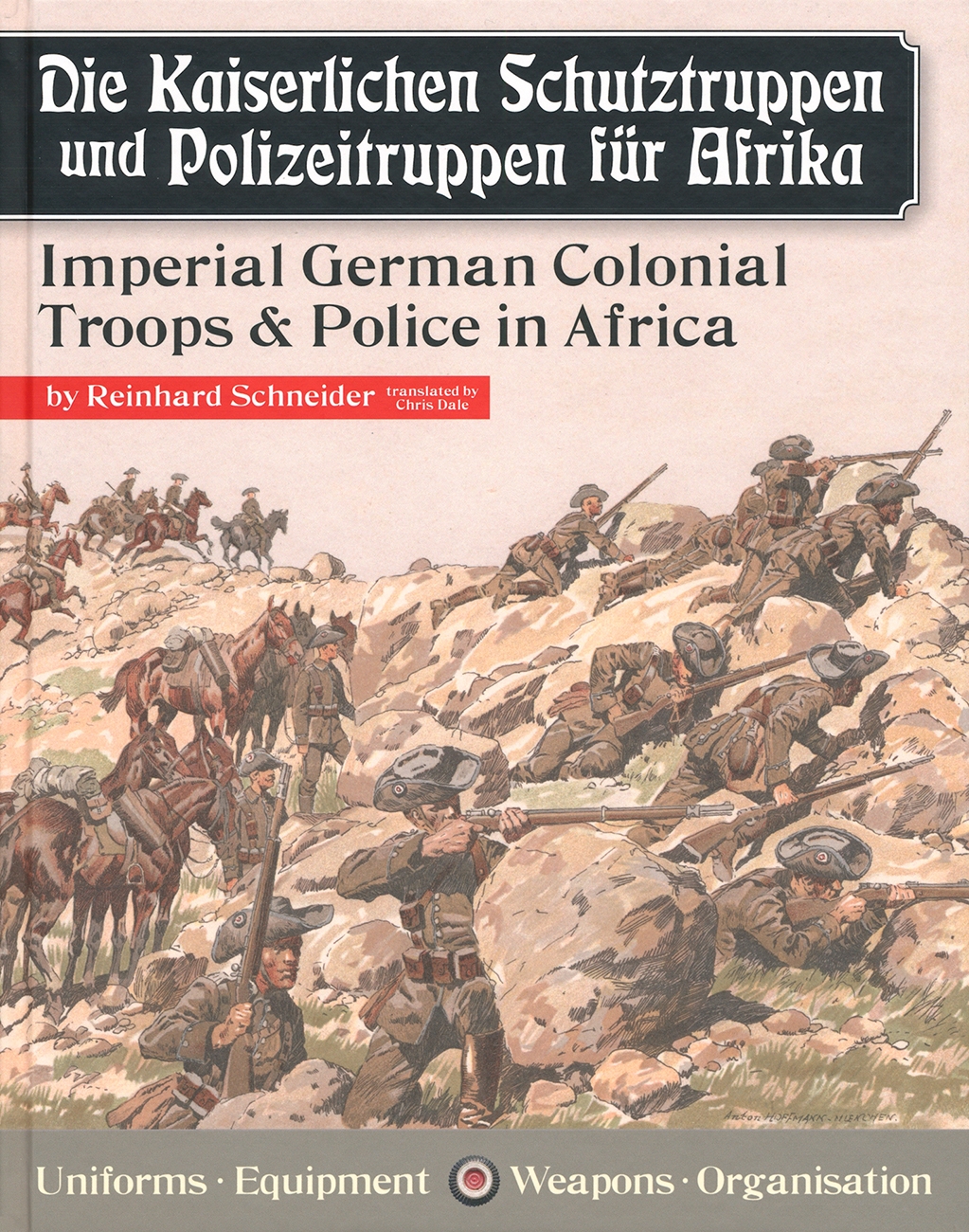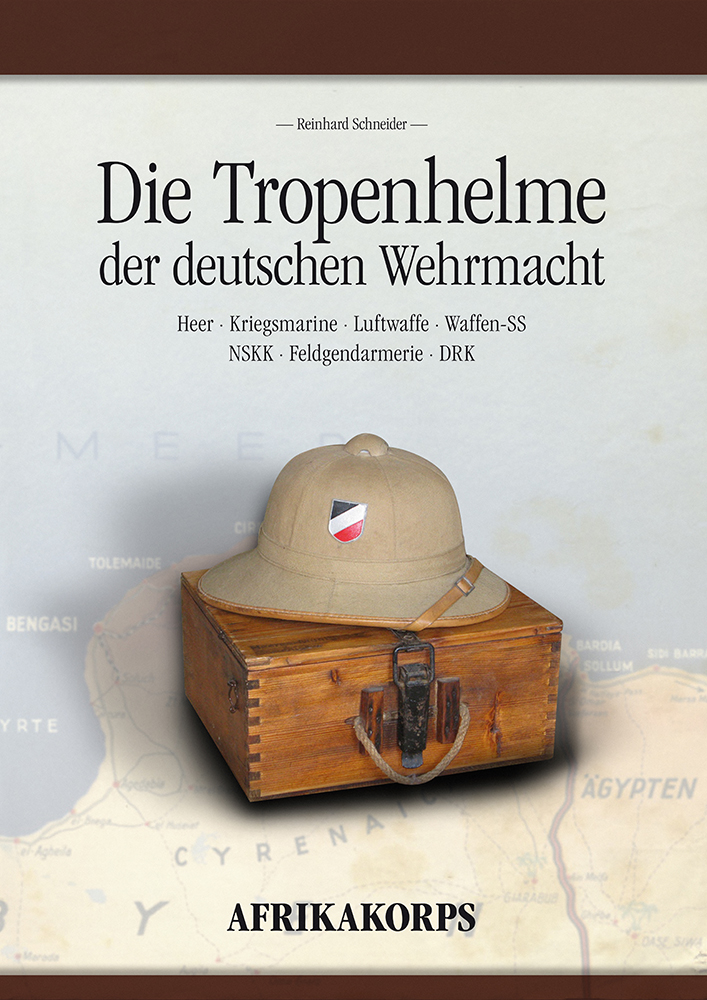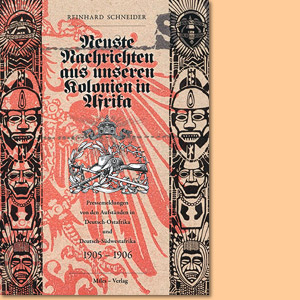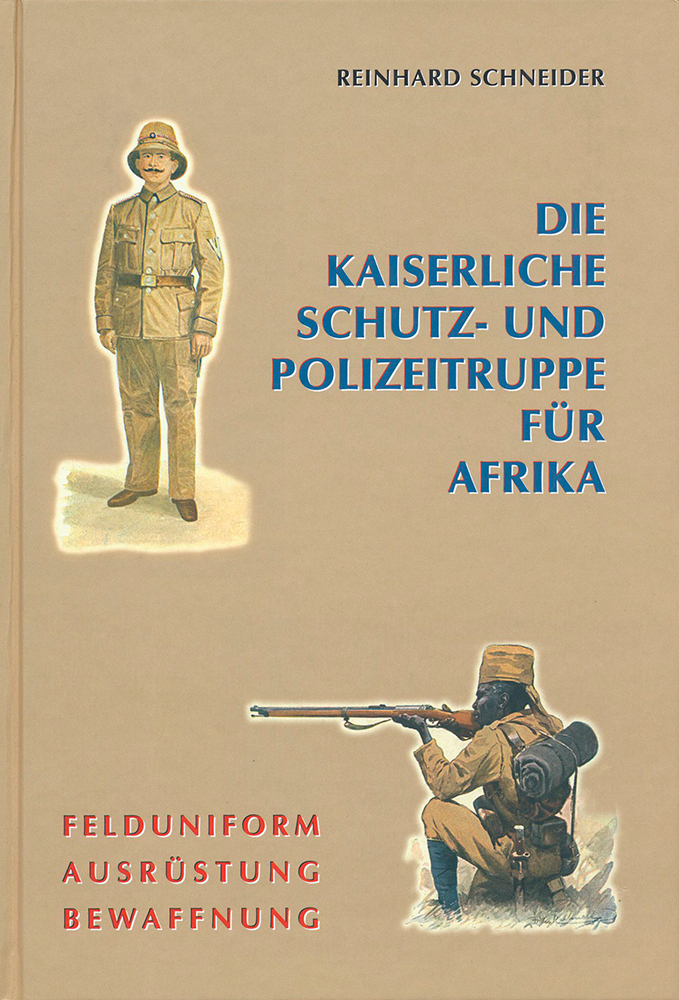The Imperial German Colonial Troops & Police in Africa, by Reinhard Schneider
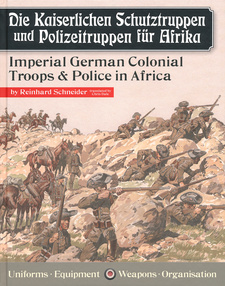
The Imperial German Colonial Troops & Police in Africa, by Reinhard Schneider. Pedestrian Press. Toledo (Ohio), United States 2023. ISBN 9780962650611 / ISBN 978-0-9626506-1-1
The Imperial German Colonial Troops & Police in Africa, by Reinhard Schneider. This book was translated by Chris Dale from the original German edition, "Die Kaiserliche Schutz- und Polizeitruppe für Afrika. Felduniform, Ausrüstung, Bewaffnung".
Translator's Note
Regarding the titles of most unit types and ranks, I have for ease retained German terminology throughout most of this book. The German Colonial Troops were called the Schutztruppe (Protectorate Troops). German Colonial Paramilitary Police Forces were called the Polizeitruppen. Both of these German titles will already be familiar to many readers and are more memorable than their lengthier English translations. In the case of ranks, I have also retained German titles. This is because translated rank titles often cause confusion. For example, while a German Leutnant and a British Lieutenant might appear the same, they are actually not equivalent ranks.
German South-West Africa: Uniforms of the Schutztruppe
The Cloth Uniform (Tuchuniform) or Home Uniform (Heimatuniform) was introduced on 11 March 1897 for the Schuztruppen of all colonies to wear when in Germany. It consisted of a tunic based on that of the Prussian infantry with Guard braid (Litzen), but in pale grey with Swedish-style cuffs and colony-coloured collar and piping. In the case of German South-West Africa, this was cornflower blue. The white metal buttons of the tunic bore the Imperial crown. Shoulder straps took the form of four-fold mohair cord in black/white/ red sewn together for NCOs and other ranks. These were again fastened with a small Imperial crown button. NCO rank insignia was as for the Prussian army. The trousers were in matching grey, piped also in the colony colour of cornflower blue. The Corduroy Tunic (Kordwaffenrock) resembled the pale-grey Home Tunic in most respects but was made of sand grey corduroy. All insignia was the same as on the Home Tunic. The front was fastened by eight white metal buttons with the Imperial crown. After washing and being bleached by the sun, the corduroy became paler and less uniform in color. The Field Tunic (Feldrock) had a jacket-like shape and was made of yellow brown khaki drill. There was a 12 cm split down the rear skirt. The stand-and-fall collar and buttonless Swedish cuffs were made of the same material and had cornflower blue piping, which also edged the front flap of the tunic. At the collar was an eyelet with a closing hook. The tunic was fastened by six white metal buttons bearing the Imperial crown (on a grained background for officers, smooth for NCOs and other ranks). Both sides of the tunic had an external breast pocket, which sloped slightly towards the middle, roughly level with the second and third buttons. The pockets had square-cut flaps and a vertical centre fold. There were two pockets (without centre fold) at the bottom of the skirt, which had straight flaps. These pocket flaps were closed with small buttons with the Imperial crown. The Feldrock had the same shoulder straps as worn on the Tuchuniform.
NCO Rank Insignia for the Feldrock
The insignia consisted of chevrons of silver braid with straight upward angles. These chevrons were sewn onto a backing of cornflower blue cloth and attached to the left sleeve by means of three hooks. The NCO ranks were indicated by the number of chevrons on the left sleeve of the field tunic:
Sergeant Major (Feldwebel): four chevrons
First Sergeant (Vize-Feldwebel): three chevrons
Sergeant (Sergeant): two chevrons
Corporal (Unteroffizier): one chevron
Lance Corporal (Gefreiter) : the insignia of the Lance Corporal was a small decorative button on each side of the tunic collar, made of metal and displaying the heraldic Imperial eagle.
The Kordfeldrock (originally called the Kordlitewka) was a tunic also made of velvetlike ribbed Manchester cord, but was similar in cut to the Home Litewka. It had breast pockets and side pockets with simple flaps without buttons, a concealed front, and no collar patches. Examples can be found without breast pockets. The Kordfeldrock was intended to replace the Kordwaffenrock and used the same rank system as the Feldrock. [...]
This is an excerpt from The Imperial German Colonial Troops & Police in Africa, by Reinhard Schneider.
Title: The Imperial German Colonial Troops & Police in Africa
Subtitle: Uniforms - Equipment - Weapons - Organisation
Author: Reinhard Schneider
Translation: Chris Dale
Publisher: Pedestrian Press
Toledo (Ohio), United States 2023
ISBN 9780962650611 / ISBN 978-0-9626506-1-1
Hardcover, 30 x 35 cm, 280 pages, 360 colour and b/w images, English text
Schneider, Reinhard im Namibiana-Buchangebot
The Imperial German Colonial Troops & Police in Africa
The Imperial German Colonial Troops and Police in Africa: uniforms, equipment, weapons and organisation.
Die Tropenhelme der deutschen Wehrmacht
Diese interessante Schrift beschreibt die Tropenhelme aller Waffengattungen der deutschen Wehrmacht.
Neuste Nachrichten aus unseren Kolonien in Afrika
Pressemeldungen von den Aufständen in Deutsch-Ostafrika und Deutsch-Südwestafrika 1905-1906, zusammengefaßt als Neuste Nachrichten aus unseren Kolonien in Afrika.
Die kaiserliche Schutz- und Polizeitruppe für Afrika
Die Felduniformen, Ausrüstung, Bewaffnung der kaiserlichen Schutz- und Polizeitruppe für Afrika.

